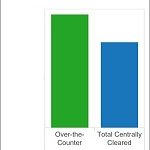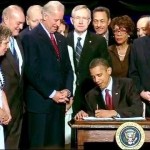-
Recent Posts
- Trump’s “Big Beautiful Bill” Is a Grotesque Giveaway to Fossil Fuel Billionaires While Adding $3.3 Trillion to Nation’s Debt
- Senator Chris Murphy Charges that Trump “Has Opened a Channel for Bribery”
- Congressman Casten: Trump’s Assault on the Rule of Law Is Causing Capital Flight Out of U.S. by Foreign Investors
- Trump’s Approval Rating Drops to 80-Year Low; IMF Says U.S. Tariffs Now Exceed the Highs During the Great Depression
- Nasdaq Has Lost More than 3,000 Points Since Trump’s First Full Day in Office in 2025; the Pain Has Barely Begun
- The Bond Crisis Last Week Was a Global No-Confidence Vote in U. S. President Donald Trump
- Trump’s Tariff Plan Guts $5 Trillion in Stock Value in Two Days; Senator Warren Calls for Emergency Action Before Markets Open on Monday
- Trump’s Attacks on Big Law, Universities, and the Media Have a Common Goal: Silence Dissent Against Authoritarian Rule
- Trump Administration Gives All Clear to Laundering Money through Shell Companies and Bribing Foreign Officials
- Four Megabanks on Wall Street Hold $3.2 Trillion in Uninsured Deposits – Which May Explain Senator Schumer’s Pivot to the GOP to Stop a Government Shutdown
- Here’s What Came Crashing Down Yesterday for Trump’s “Genius” Guy, Elon Musk: Tesla Stock, Access to Twitter (X), His Years of Secret Calls with Putin
- After Banning the Associated Press, Trump Is Now Targeting Specific Journalists That He Wants to See Fired
- Closely Watched Atlanta Fed Model Predicts Negative U.S. Growth in First Quarter
- Trump’s Gangster Diplomacy Makes Front Page Headlines Around the Globe
- Who Benefits Alongside Elon Musk If He Succeeds in Killing the CFPB: the Megabanks on Wall Street that Underwrite His Tesla Stock Offerings
- In Trump 1.0, the State Department Used Taxpayer Money to Publish a Book Elevating Elon Musk to a Superhero; It Was Funded by USAID, the Agency Musk Wants to Quickly Shut Down
- News Host Joy Reid Raises Threat of Trump Selling U.S. to Putin; Ten Days Later Her Show Is Cancelled
- Elon Musk’s DOGE Appears to Be Violating a Court Order; It Has Taken Down Hundreds of YouTube Videos that Educate Americans on How to Avoid Being Swindled
- Barron’s Releases Audio of Jamie Dimon Cursing Out His Workers at a Town Hall, as Dimon Plans to Dump Another One Million JPM Shares
- There’s One Federal Investigative Agency that Neither Trump nor Elon Musk Can Touch: It Just Opened an Investigation into DOGE
- Elon Musk’s Companies Were Under Investigation by Five Inspectors General When the Trump Administration Fired Them and Made Musk the Investigator
- Donald Trump Gives the Greenlight to Goldman Sachs and JPMorgan Chase to Return to Bribing Foreign Officials
- After Tech Geeks Built a Back Door to Loot Billions from FTX, Republicans Refuse to Investigate What Elon Musk’s Tech-Squad Did Inside the U.S. Treasury’s Payment System
- Former Prosecutor, Now U.S. Senator, Informs Tesla That CEO Musk May Be Violating Federal Law and to “Preserve All Records”
- Trump’s Hedge Fund Guy Is Now Overseeing the U.S. Treasury, IRS, OCC, U.S. Mint, FinCEN, F-SOC, and the Consumer Financial Protection Bureau
- As Elon Musk Begins Shutting Down Payments to Federal Contractors, a Strange Money Trail Emerges to His Operatives Inside the U.S. Treasury’s Payment System
- JPMorgan Chase Charged by Yet Another Internal Whistleblower with Cooking the Books
- We Asked Google’s AI Search Model, Gemini, Questions About the Fed and Wall Street Megabanks: It Got the Answers Dead Wrong
- With Trump and Melania’s Crypto Coins Likely to Raise Legal Challenges, Why Didn’t Trump Fire the SEC’s Inspector General in His Purge of IGs?
- Fossil Fuel Industry Could End Up Paying Tens of Billions for LA Wildfires and Deceiving the Public on Climate Change for Decades
- It’s Being Called the Biggest Grift by a President in U.S. History: Trump and First Lady Launch their Own Crypto Coins
- Trump Plans to Install a Fracking CEO to Head the Energy Department and Declare a National Emergency on Energy to Gain Vast Powers
- Fossil Fuel Money Played a Role in the Los Angeles Fires and the Push to Install Pete Hegseth as Secretary of Defense
- When It Comes to Wealth Retention in Retirement, Concrete May Be the New Gold
- Wall Street Watchdog Warns “Clock Is Ticking on a Coming Catastrophic Financial Crash”
- Wall Street Is Sending the Same Message to Americans on Fossil Fuel Financing that It Sent on Cigarettes: Drop Dead
- In a Six-Week Span, this Dark Pool with a Curious Past Traded 3.7 Billion Shares
- Wall Street’s Lobby Firm Hired Eugene Scalia of Gibson Dunn to Sue the Fed for Jamie Dimon
- Postmaster General Louis DeJoy Made $561,051 in Compensation in 2024, as Mail Costs Spiked and Delivery Deteriorated
- Fed Chair Jay Powell Sends a Bold Message to Trump and Tanks the Dow by 1123 Points
- The Head of Fixed Income at T. Rowe Price Makes the Scary Case for the 10-Year Treasury to Spike to 6 Percent
- $663 Billion in Cash Assets Have Gone Poof at the Largest U.S. Banks
- Donald Trump to Ring Bell at New York Stock Exchange Today as Hit List Posters Appear in Manhattan Targeting Wall Street CEOs
- Trump Has a Slush Fund to Prop Up the Dollar – Will He Use It to Prop Up Bitcoin Instead?
- A CEO Assassination; a Billionaire Heiress/NYPD Commissioner; a Secret Wall Street Spy Center – Here’s How They’re Connected
- Despite More than 1600 Tech Scientists Signing a Letter Calling Crypto a Sham, Trump Names a Crypto Cheerleader for SEC Chair
- The Fed Rings a Warning Bell: Hedge Funds and Life Insurers Are Reporting Historic Leverage
- Trump’s Nominee for FBI Director, Kash Patel, Has Businesses Financially Intertwined with Trump
- Donald Trump Is at Risk of Getting Named in a Fossil Fuels Conspiracy Lawsuit
- Trump Is Having Difficulty Getting a Lawyer to Accept the Nomination for SEC Chair: Here’s Why
Search Results for: newest legislator
These Charts Show Why the Fed Is Still in a Panic Over the Repo Loan Market

By Pam Martens and Russ Martens: December 31, 2019 ~ After the epic financial crash on Wall Street in 2008 – the worst since the 1929 crash and ensuing Great Depression – two key reforms were put in place in the Dodd-Frank Wall Street Reform and Consumer Protection Act of 2010 to prevent another catastrophic meltdown on Wall Street. The first key reform was that derivatives were to be moved out of the federally-insured, taxpayer backstopped commercial banks, that had been bought up by Wall Street trading houses, into units that could be wound down in a bankruptcy proceeding. It was called the “Push Out” rule. That reform was also meant to prevent the New York Fed from ever again secretly pumping upwards of $29 trillion into Wall Street trading houses and their derivative counterparties in order to bail out a corrupt casino banking system. (And yet here we are … Continue reading
Is There a Stealth Financial Crisis? Alarm Bells Are Ringing.

By Pam Martens and Russ Martens: July 11, 2019 ~ Shhh! Don’t wake the Wall Street bank regulators from their decade-long slumber to whisper in their ear that the same critical signs they ignored in 2007 and early 2008 are rearing their ugly heads again. Let’s take a look at the clear warning signs that began in July 2007 and then contrast them against what is happening today. On July 17, 2007 Bear Stearns announced that two of its hedge funds, which had held about $1.5 billion in investor capital in the first quarter of the year, were now mostly worthless. On August 9, 2007 BNP Paribas, France’s largest publicly traded bank, announced it was freezing customer withdrawals from three of its funds, effectively preventing customers from accessing $2.2 billion. It cited “evaporation of liquidity,” and the inability “to value certain assets,” as a reason. Fast forward to today: On … Continue reading
A Look Back at How Reforming Wall Street Failed So Miserably Under Obama

By Pam Martens: March 7, 2019 ~ Progressives have every right to harbor a seething contempt toward the Wall Street wing of the Democratic Party. Democrats controlled both houses of Congress in the last two years of George W. Bush’s presidency as Wall Street blew itself up and Congress passed the massive taxpayer bailout of the Wall Street mega banks. (Democrats held fewer than 50 seats in the Senate but they held operational majority since two Independents caucused with them.) In Obama’s first two years in office (January 2009 to January 2011), Democrats had increased their majorities in both chambers of Congress. Democrats were in charge when it became crystal clear from Congressional hearings that Wall Street mega banks had created, through unbridled greed and corruption, the most catastrophic financial crash since the Great Depression. Democrats were in charge when it became profoundly evident that Wall Street needed a major … Continue reading
Wall Street’s Derivatives Nightmare: New York Times Does a Shallow Dive

By Pam Martens and Russ Martens: July 24, 2018 ~ The New York Times published a 1300-word shallow dive into the byzantine, globally-interconnected world of financial derivatives in its print edition yesterday. After years of ignoring this seismic problem since it last blew up the U.S. financial system in 2008, what accounts for the New York Times’ newfound interest? We can sum up its 1300 word article using only three letters – CYA. What frightened the Times into this foray into the dark web of financial derivatives held by the biggest Wall Street banks was a frightening, 111-page deep dive into the subject by Michael Greenberger, a law professor at the University of Maryland’s Carey School of Law. Greenberger knows a thing or two about derivatives, having previously served from 1997 to 1999 as the Director of the Division of Trading and Markets at the Commodity Futures Trading Commission (CFTC) … Continue reading
Two of the Biggest Bailed Out Derivative Banks, Citi and Merrill, Get Fined for Breaking Derivatives Rules
By Pam Martens and Russ Martens: October 23, 2017 Over the past month, with little media attention, both Citigroup and Merrill Lynch have received fines from regulatory bodies for failure to properly report their trading in derivatives – an opaque trading arena that played a significant role in bringing down both firms during the financial crisis. As reported by the Government Accountability Office (GAO) in 2011, Citigroup received $2.5 trillion in cumulative, secret low cost loans from the Federal Reserve during the 2007-2010 financial crisis while Merrill received $1.9 trillion. These loans, many at almost zero interest rates, were made without the authorization or awareness of Congress. (See GAO chart below.) The loans to the two firms were on top of the publicly disclosed and Congress-approved TARP bailout funds. Significant portions of the money loaned to Citigroup and Merrill Lynch were authorized by the Federal Reserve to be funneled to the … Continue reading
The Power Players Behind Silencing Wall Street Reformers
By Pam Martens and Russ Martens: October 18, 2017 America has now been through various iterations of “it’s time to stop bashing Wall Street” by writers who seem to easily get air time or plenty of print space to make their case. An OpEd in the New York Times today is the latest in this endless series. We’ll get to that column shortly, but first some necessary background. Wall Street did not accidentally run a barge aground and leave a small oil slick on the Hudson River. Wall Street did not accidentally release tainted lettuce that sickened a few dozen people. What Wall Street did was intentional and criminal: it financially engineered a toxic subprime house of cards which it knew from its own internal reviews was going to collapse; it then molded the toxic product into inscrutable bundles; it sold the bundles to unsuspecting investors around the globe while … Continue reading
This Chart Proves Paul Krugman Is Dead Wrong on Wall Street Reform
By Pam Martens and Russ Martens: May 1, 2017 Back in 2014 New York Times columnist Paul Krugman embarked on a mission to defend President Obama’s reform of Wall Street’s biggest banks that had brought the country to the brink of financial collapse just six years earlier. In August of 2014 Krugman wrote that the Dodd-Frank financial reform legislation that Obama had signed into law in 2010 “is a success story.” Krugman’s rubber stamp of Dodd-Frank came despite the fact that JPMorgan Chase, the country’s largest bank, had just two years earlier – long after the passage of Dodd-Frank – used hundreds of billions of dollars of its depositors’ money in its commercial bank, Chase, to make wild gambles in derivatives in London, losing at least $6.2 billion along the way. This so-called “London Whale” debacle correctly convinced millions of Americans that the only way to truly reform Wall Street … Continue reading
What Went Wrong in Wall Street Reform: Obama Versus FDR
By Pam Martens and Russ Martens: March 15, 2017 Following the Wall Street crash of 1929, thousands of banks failed in the United States. More than 3,000 banks went under in 1931 followed by more than 1400 the following year. There was no Federal insurance on bank deposits in those days so both depositors and shareholders were wiped out or received pennies on the dollar when the banks went bust. This deepened the panic and deepened the Great Depression. Many of the bank failures stemmed from the banks using depositors’ money to speculate in the stock market, sometimes to manipulate the price of their own stock. Franklin Delano Roosevelt was sworn in as President of the United States on March 4, 1933. Two days later he declared a national banking holiday, meaning that he closed all the banks and sent in the examiners to determine which ones were sound and … Continue reading
Political Revolution Sprouts New Shoots Outside Goldman Sachs
By Pam Martens and Russ Martens: January 18, 2017 Sometimes all it takes to win a war is a rallying cry. That cry started in the bowels of Wall Street on September 17, 2011 with the takeover of Zuccotti Park by grassroots protesters calling themselves Occupy Wall Street. The thunder clap from that movement, “we are the 99 percent,” reverberated around the world. Occupy focused the public’s attention on the insidious wealth transfer system that has been institutionalized by Wall Street on behalf of the 1 percent – a system which has minted dozens of billionaires and thousands of multi-millionaires while collapsing the U.S. economy from 2008 to 2010 and leaving millions of Americans homeless and jobless. (See our past coverage of Occupy in related articles below.) Yesterday, green shoots from the Occupy movement sprouted in a light falling rain outside the headquarters of Goldman Sachs at 200 West Street … Continue reading
The New York Times Has a Fatal Wall Street Bias
By Pam Martens and Russ Martens: November 4, 2016 A few years back, when William D. Cohan was writing for Bloomberg News, one could reliably count on him to hold Wall Street’s feet to the fire. Now Cohan is writing for the New York Times and it feels like the Times sent him for an in-house lobotomy or at least a crash course in reoriented thinking. Consider Cohan’s article from yesterday in the Times, titled Why Washington Needs Wall Street. First Cohan piles on to the recent bashing of Senator Elizabeth Warren by Roger Lowenstein in the pages of the Times. Warren has led a meaningful, multi-year charge to expose the failed reforms and lapdog regulators overseeing Wall Street, which is hands-down the most corrupt industry in America and located in the same home town as the New York Times. (If you can’t clean up your own home town, what … Continue reading

